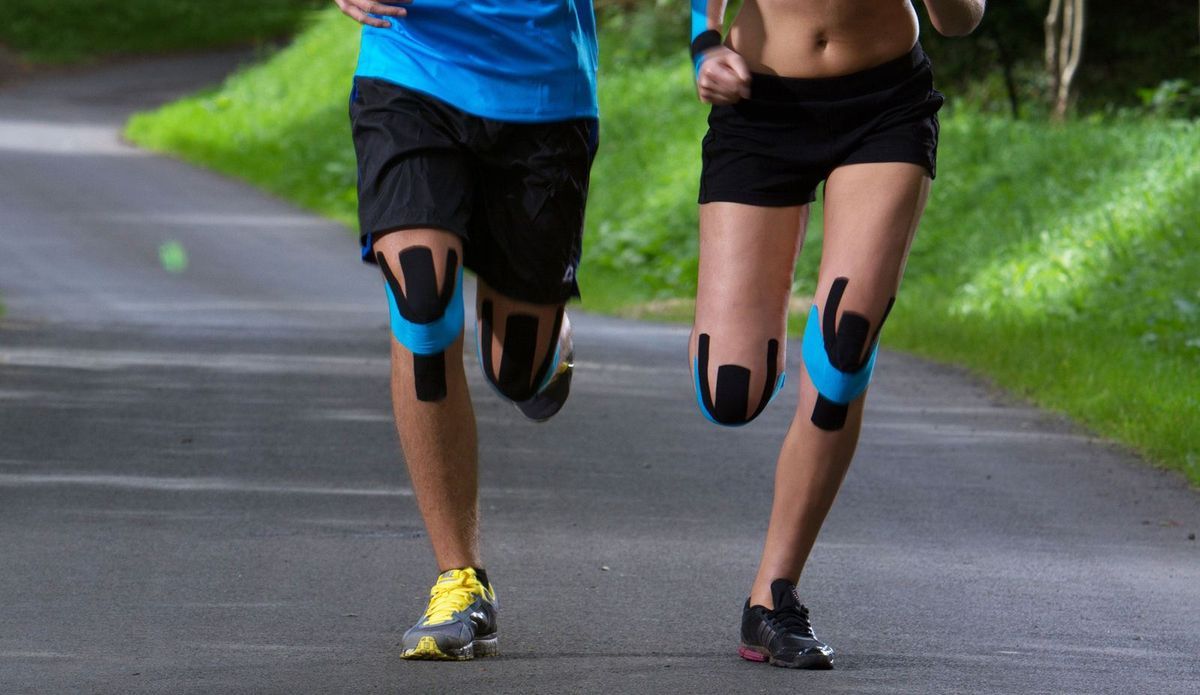Kinesiotaping, often called taping, is a taping method by gluing a special tape (with elastic properties) to the surface of the body. Kinesiology taping developed by Dr. Kenzo Kase, Japanese chiropractor in the 1970s. Доктор Кензо Касе создал специальную эластичную ленту – динамический гипс, used in this method. The principles of using kinesio taping are based on kinesiology, the science of the movement of the human body. 
Кинезиотейпирование – что это?
Kinesiotaping (kinesiology taping), also known as dynamic taping, is one of the therapeutic methods, used by physiotherapists. This is the gluing of special flexible tapes, which can be purchased on the page https://nopain.com.ua/, to certain parts of the body. The method is very popular 10 years old.
How it works?
Kinesiotaping, despite the absence of any chemical, pharmacological substances, that could penetrate the skin, gives an extremely beneficial effect, as evidenced by numerous publications. The effect is often immediate.. Of course, this method should not be considered as a panacea for all diseases of the musculoskeletal system, but worth keeping in mind, what is kinesiology taping, as one of the few methods, allows you to quickly get rid of pain or, at least, reduce it.
Kinesio plasters are especially popular with athletes.. In a situation, when there is trauma and pain, eg, knee pain, the use of tape may allow the competition to continue without pain, also providing a sort of passive support for the muscle and protecting it from further damage. Dynamic taping also allows you to increase muscle strength by improving blood circulation.. For this reason, they were once considered a doping agent.. However, the absence of chemicals, entering the bloodstream, ended up ruling it out.
Who Can Benefit From Kinesiology Taping??
Kinesio taping is effective for many diseases, how sharp, as well as chronic. Его применение не ограничивается области только опорно – двигательного аппарата. The indications for kinesiology taping are:
- injuries and bruises, such as muscle tear, joint sprain (eg, twisted ankle),
- spinal and chest defects,
- pain syndromes of the spine and limbs (eg, Kinesio taping of the knee, shoulder and neck),
- degenerative pain disorders,
- lymphedema, eg, women after mastectomy (so-called lymphatic taping ),
- paralysis of the facial nerve,
- swallowing disorder,
- the occurrence of extensive bruising as a result of injuries,
- scar treatment,
- терапия неврологических больных…
Kinesiology patches can be used on almost all parts of the body, eg, to fix the shoulder, wrists, spine, calf or dynamic belly taping.
Пластыри для тейпирования – чем они отличаются?
The term "dynamic patches" is used for a reason.. This is due to the fact, that their gluing does not interfere with movement, but allows the tape to act dynamically on the skin and muscles.
Physiotherapy tapes have specific properties. They are made from the highest quality cotton., similar in thickness and stretch to human skin. They are covered with medical glue., which provides strong adhesion to the surface of the skin. It is important to note, that rehabilitation plasters do not cause negative skin sensations in the form of discomfort, associated with their wearing..
Кинезиотейпирование – эффекты
Therapists' opinions about the use of kinesiology taping are very flattering.. Уменьшение боли за счет подтяжки кожи и уменьшение раздражения болевых рецепторов – вот главные причиты того, why patients often refer to kinesiology patches as pain relievers.
Local improvement of blood circulation and increased venous blood flow improves metabolism and promotes faster removal of waste products. Kinesio taping for lymphedema allows you to drain excess lymph, thereby reducing swelling. Dynamic taping is also used in pediatrics. Коррекция положения конечностей или опорных мышечных функций для облегчения движений – примеры использования кинезиотейпинга у детей .
Кинезиотейпирование – у физиотерапевта или дома?
The most frequently asked question about kinetic tapes: how to apply kinesio plasters? Also frequently asked questions: which kinesiology taping tape to choose, how to stick kinesio tape on the spine , how to put tape on back, are tapes good for injuries?
However, most experts do not approve of independent attempts to use kinesiology tapes.. This is due to the need to have relevant knowledge both in relation to the structure of the human body, diagnosis and treatment of diseases, and the work of physiotherapy patches. Self-use of patches, probably, will not bring expected results. The best thing to do is a physiotherapist., who knows how much and how to stick such tapes.
Also, many are interested in their wide range of colors.. But the color itself has only aesthetic value here.. However, for extensive use, medical tapes of several colors are used, which can greatly facilitate bonding.